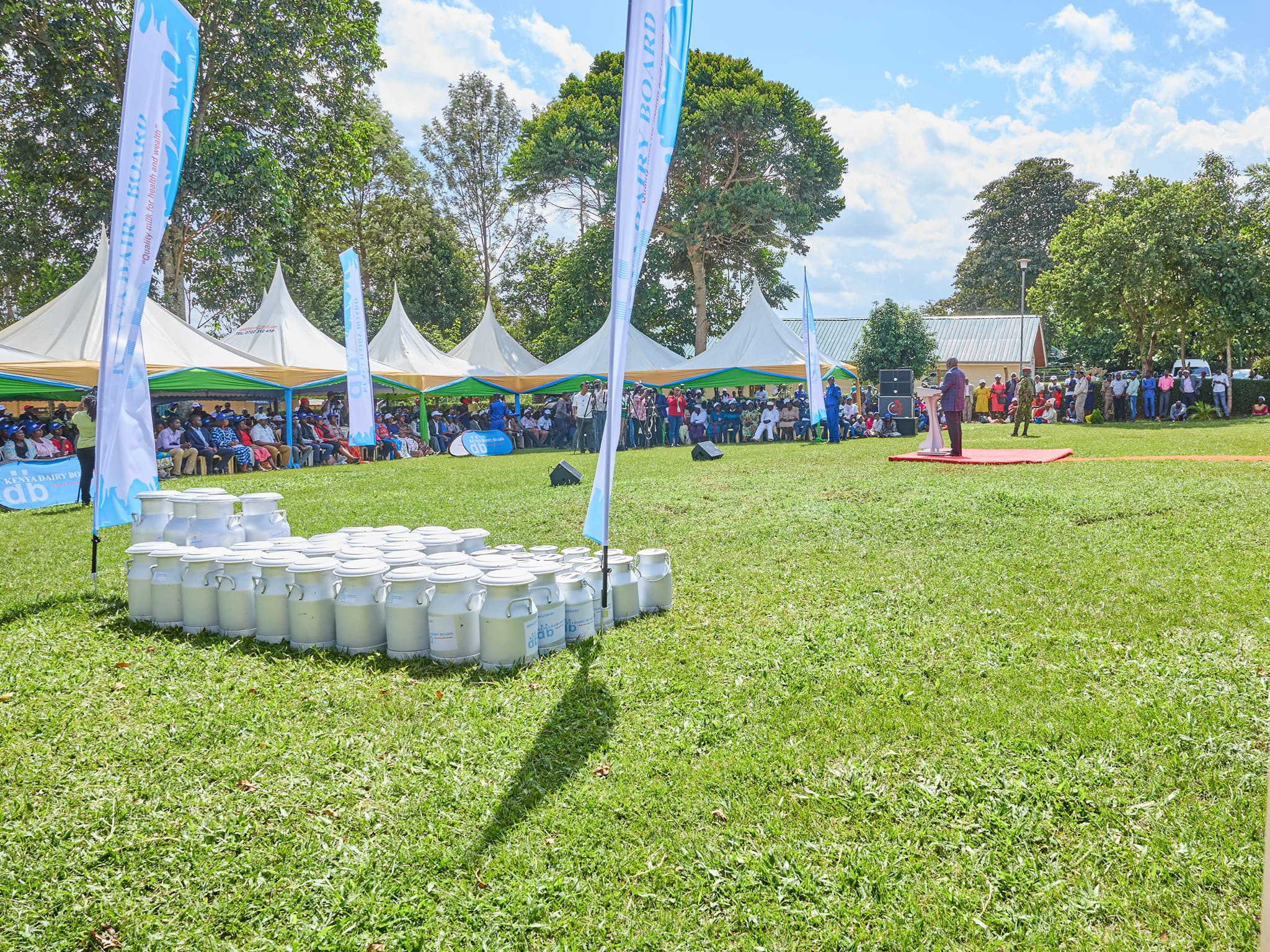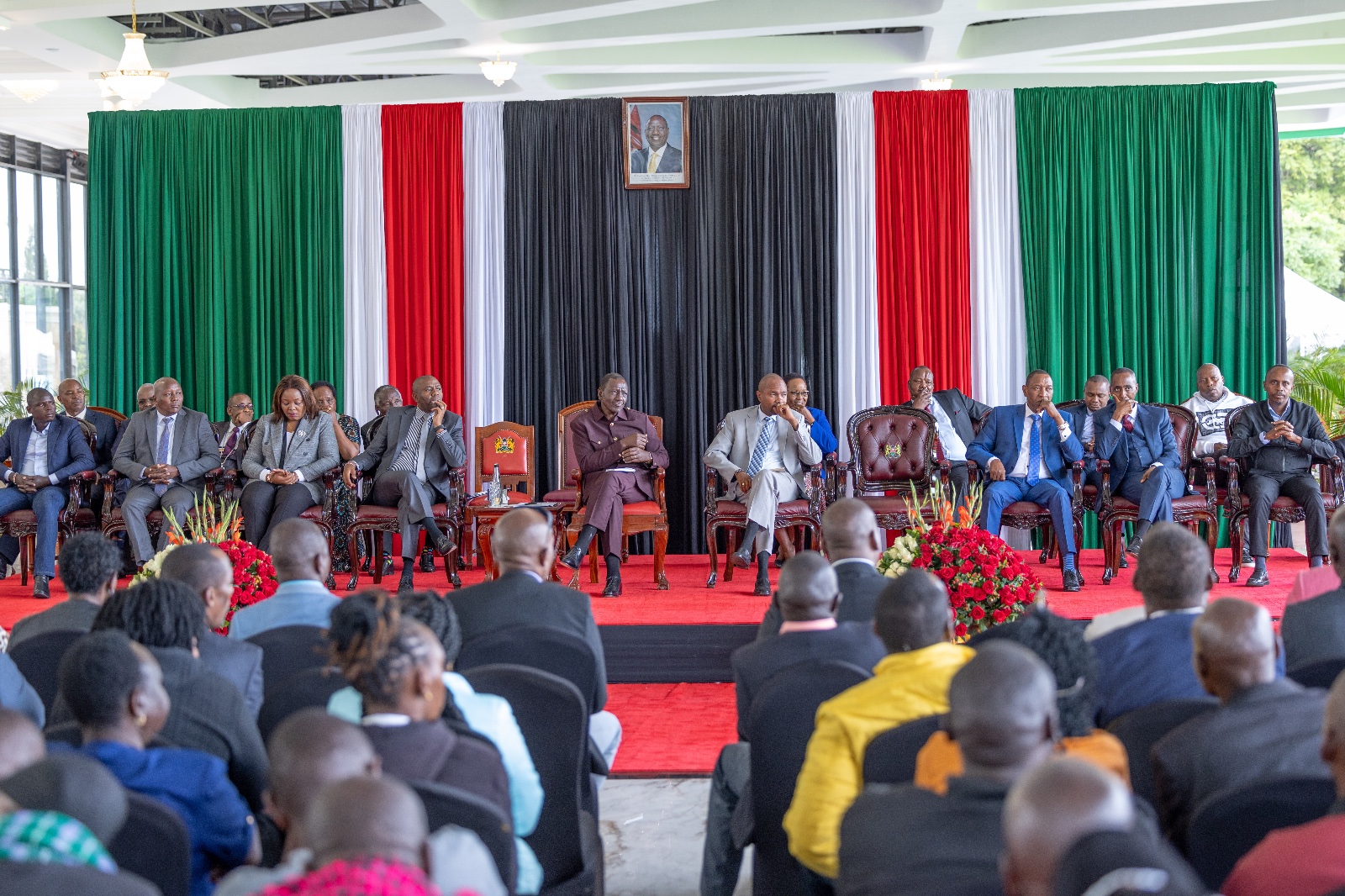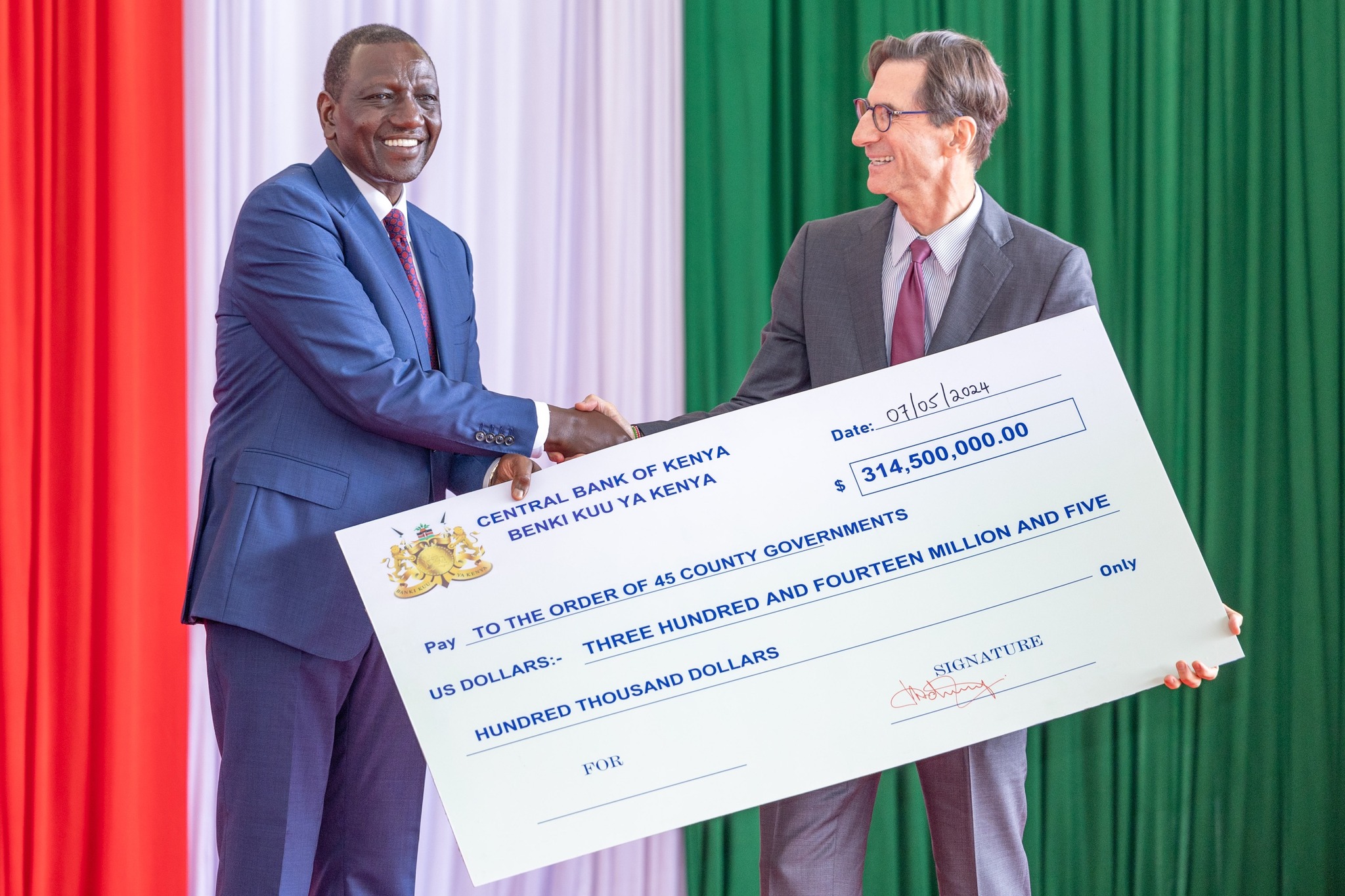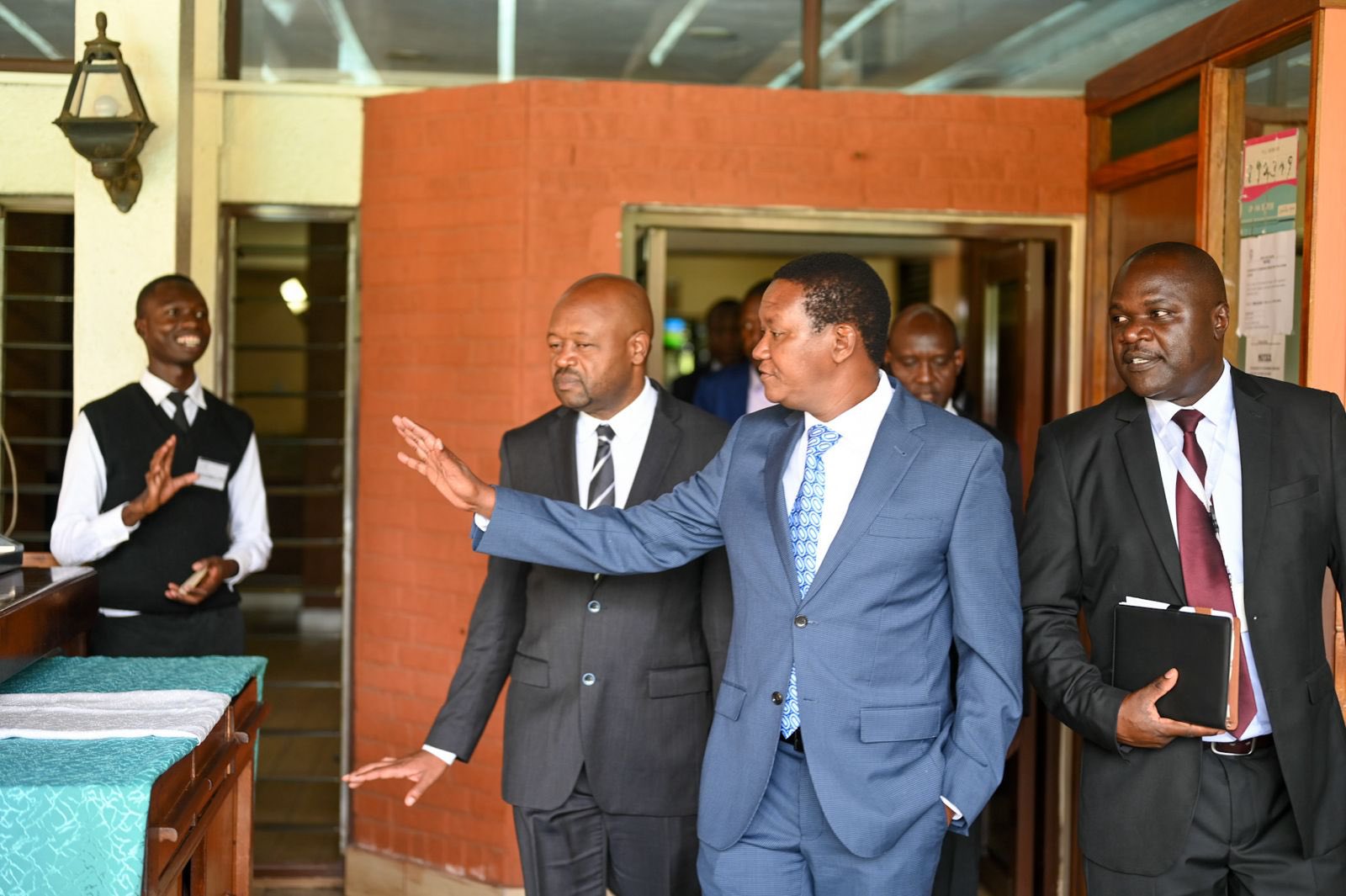
Deputy President Rigathi Gachagua has assured farmers the Government will clear arrears owed to dairy farmers who supply milk to the New KCC.
The DP revealed that the government is exploring international milk markets for exportation of at least one billion liters of milk annually.
Speaking today in Embu, during the ‘Embu County Livestock, Dairy and Fisheries Exhibition’ organized by the Kenya Dairy Board at KALRO Grounds, Embu town, Gachagua said the New KCC will clear the pending payments by next week.
“I will talk to the Cabinet Secretary Cooperatives & MSMEs and the New KCC to clear the arrears by next week because we have an obligation to support the farmers,” said the DP.
He explained that the milk exportation plan and modernization of the New KCC are part of the government’s implementation of the Bottom-Up economic model, which focuses on bolstering the small-scale entrepreneurs and the rural economy.
He said that the government has deployed various strategies to double milk production from the current 5.2 billion liter annually to 10 billion liters by year 2027.
According to data from the Kenya Dairy Board, Kenyan farmers are currently producing 5.2 billion liters annually (cow 3.9 billion liters, camel milk 920 million, goat milk 273 million and sheep milk 107 million). A total of 2.2 billion liters are sold informally.
The exportation of the milk, he said, is part of the government’s strategy of increasing the foreign exchange earnings from dairy farming in exporting up to 1 billion liters per year.
“We want to expand our export portfolio for the small-scale farmers to also taste the US Dollar like their tea and coffee counterparts,” he stated.
The Deputy President announced that starting this month, March 2024, dairy farmers will be earning Sh50 per liter of milk supplied to the New KCC, as promised by President William Ruto.
“With an investment of over Sh5 billion for modernization of the New KCC, Sh50 is just but the start as we look forward to offering our farmers more. We are also establishing structural support systems such as milk coolers to tame post-harvest losses, which stand at about 270 Million liter annually,” said DP Gachagua.






